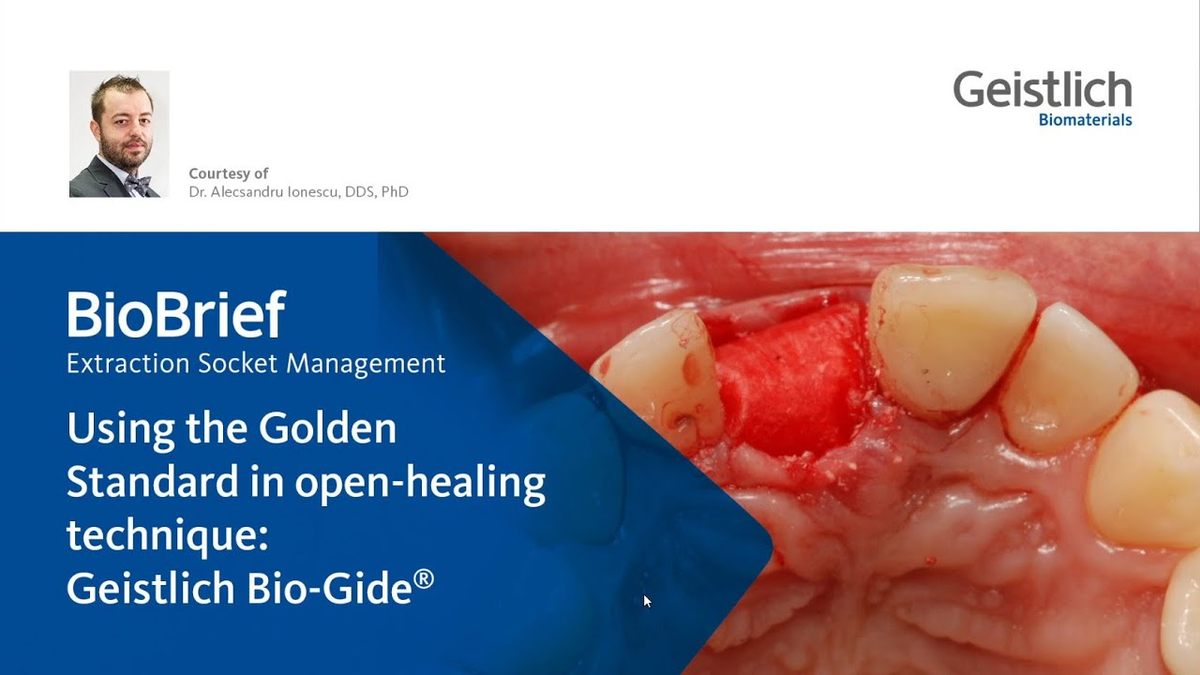
Gold standard in open healing: Geistlich Bio-Gide®
BioBrief - Extraction Socket Management
The Situation
The patient complained of “tooth mobility” that first occurred 3 months priviously, after a sports accident that caused a trauma in that region. As he had no serious pain, he assumed that everything would go back to normal after a while. However, clinical control and a CBCT scan demonstrated that there was a root fracture at tooth 11, and, due to the root micro movement in the alveolar ridge together with the periodontal bacterial infiltration, the buccal bone was resorbed (type 2 class).
The Approach
Tooth 11 was extracted atraumatically and the socket preservation procedure was performed in accordance with the open-healing protocol. Geistlich Bio-Oss® and Geistlich Bio-Gide® were used. The procedure involved no flap elevation or periosteal incisions; instead, the membrane was intentionally left exposed, and a continuous PTFE suture was meticulously placed along the free gingival margins to stabilize the membrane.
The Outcome
Clinical control and CBCT scan showed long-term stability of soft and hard tissues. The final outcome was stable, from both functional and esthetic points of view, reinforcing the biological advantages using the open-healing technique followed by flapless tissue level implants in the esthetic zone.
Keys to Success
- No flap
- No incision in the periosteum
- Membrane insertion inside the extraction socket
- Bone granules to fix the membrane inside the extraction socket
- Tension-free suturing
- Continuous PTFE sutures
Watch this BioBrief





